Waste Treatment Technology in JAPAN
Introduction
All waste materials except radioactive wastes are classified into two kinds in Japan. One is the "domestic wastes" and the other is the "industrial wastes". Among the wastes generated from business activities, 19 kinds of industrial waste are designated by the "Waste Disposal and Public Cleansing Law", and others fall within domestic waste. The conceptional classification of wastes is illustrated in Figure 1. Enterprisers have to treat their industrial waste for themselves, and the responsibility for domestic waste disposal rests with municipalities.
Figure 1 Classification of Wastes
Domestic waste is classified into four categories; household waste, bulky waste, waste directly carried to the municipal waste treatment facilities, and those treated in-house at the sources. Household waste and bulky waste are normally collected on schedules by municipalities The treatment process applied in Japan are incineration, composting, recycling and direct landfill. Of those treatment techniques, incineration process is most effective to reduce the quantity of wastes and to stabilize them. As illustrated in Figure 2, more than 70 percent of domestic waste are incinerated.
-Combustion Process;
-Gas Cooling Process;
-Flue Gas Treatment Process;
Figure 2 Domestic Waste Treatment in Japan
Figure 3 Construction of Incineration System
HC1 and SOx removal;
NOx reduction and removal;
-Waste Heat Utilization Process;
-Ash Handling Process;
Bulky waste is, in general, crashed and classified into combustibles and noncombustibles. Combustible materials are incinerated and noncombustible materials are recycled or directily landfilled.
Figure 4 Industrial Wastes Discharged
Figure 5 Conditions of Treatment and Disposal of Industrial Wastes (1992)
Figure 6 Share of Treatment and Disposal of Industrial Wastes
The number of industrial treatment facilities owned by enterprises and agencies amounts 13,215 in total, including 12 kinds of treatment facilities and 3 types of landfill disposal sites, as illustrated in Table 1.
Table l Industrial Wastes Treatment Facilities (as of April, 1993)
<Literature>
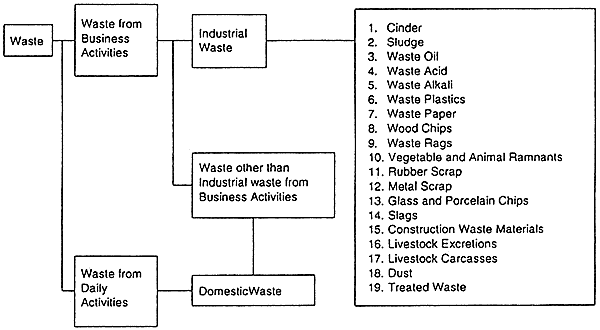
Domestic Waste
Incinerarion system is composed of some important unit processes shown in Figure 3.
stoker type, fluidized bed type and rotary kiln type
water-jet, boiler and combination of water-jet and boiler
dust removal; electrostatic precipitator and bagfilter
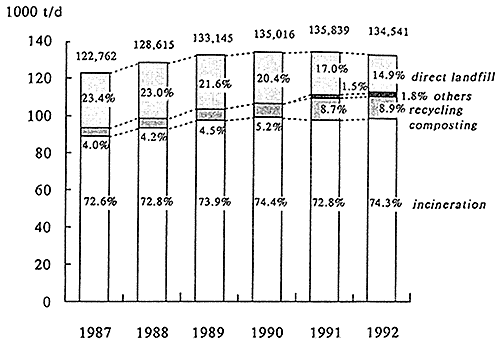
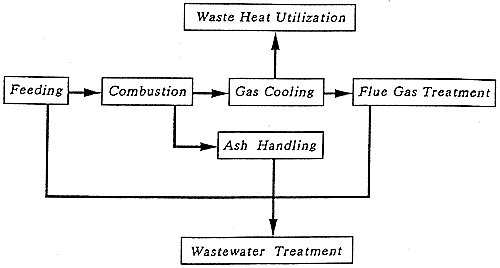

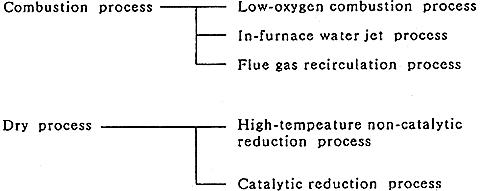
power generation and heat supply
solidification with cement, chemical treatment, flue gas neutralization and melting
Industrial Waste
The amount of discharged industrial waste is estimated at 403 million tons in the fiscal year 1992. The discharged amount by kinds is shown in Figure 4. The largest share is about 177 million tons of sludge, which accounts for 43.9 % of the total discharge, followed by 76 million tons of livestock excretions, 67 million tons of waste construction materials and 33 million tons of slags. The each share of these items exceeds 80 % of the total discharge. Discharged industrial waste is treated for controlling pollution and reducing the quantity. From a macro viewpoint over the country as shown in Figure 5, about 62 % of the total discharge is treated by means of treatment including incineration and dehydration. Approximately 15 % is subjected to final disposal directly (reclamation disposal and ocean dumping), and the remaining 23 % is recycled. Figure 6 shows the share of reuse/ recycle, reduction of quantity and final disposal by kinds of industrial wastes.
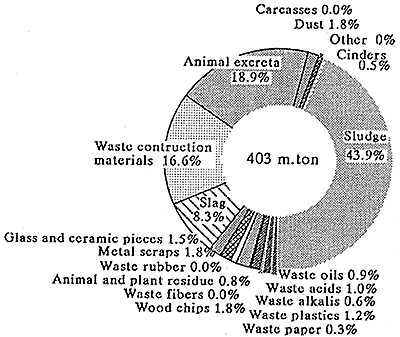
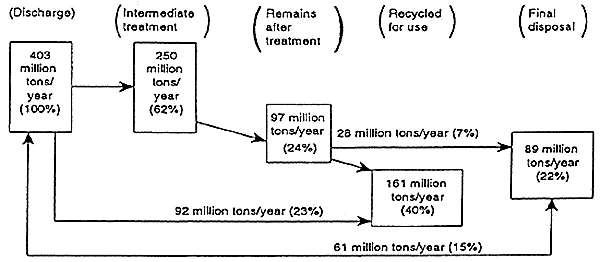
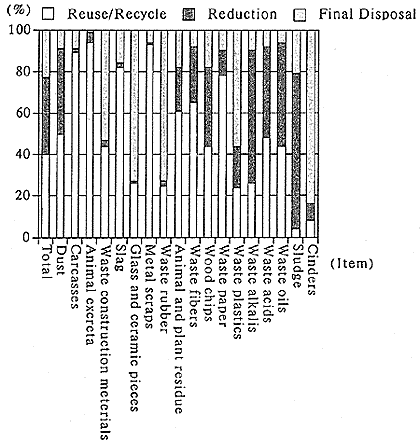
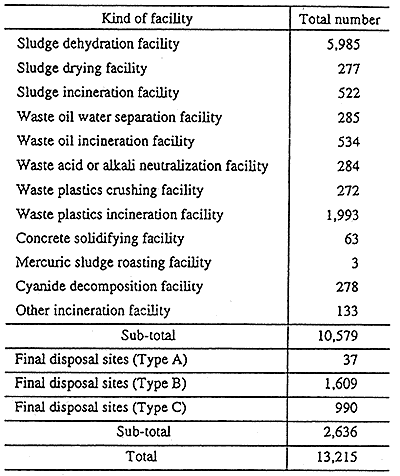
1. Environmental Policy; Waste Management Administration
(revised in 1995)
2. The Japan Society of Industrial Machinery Manufacturers;
Introduction of Japanese Advanced Environmental Equipment
(1993)